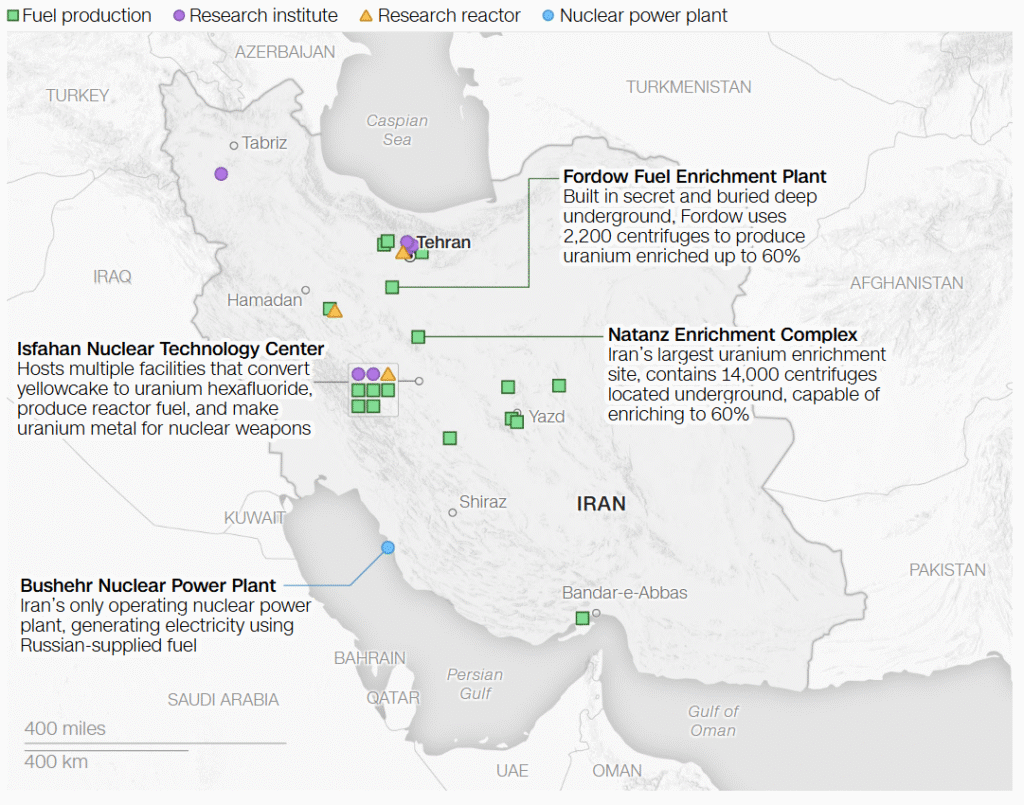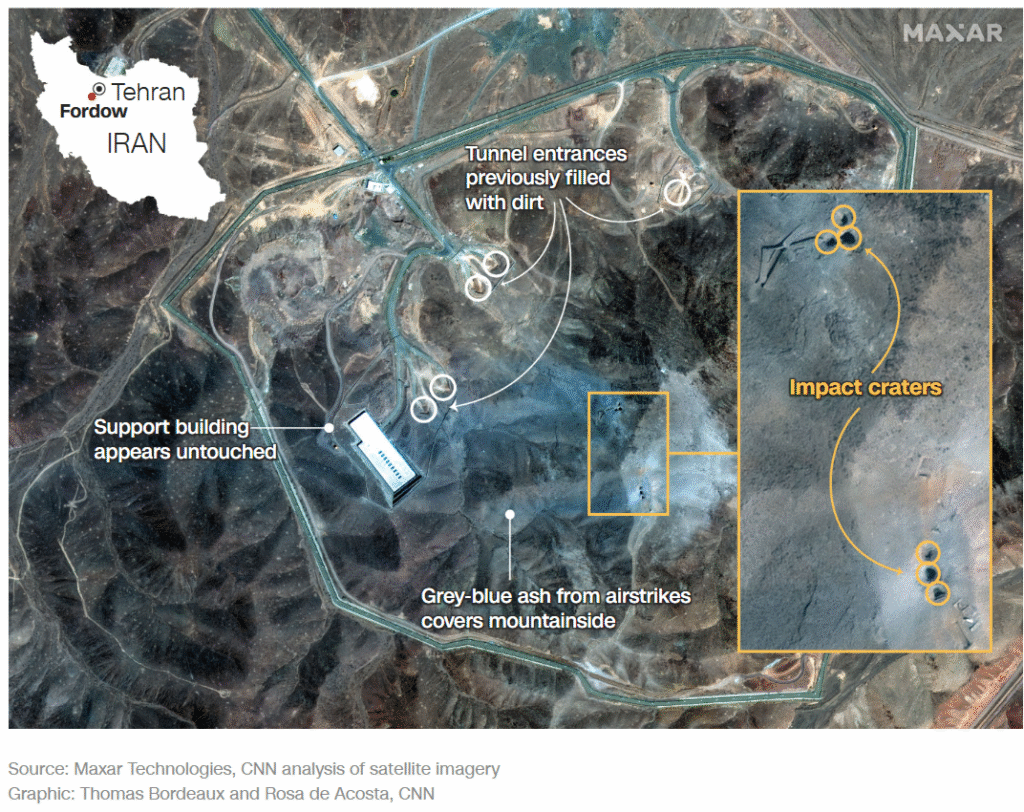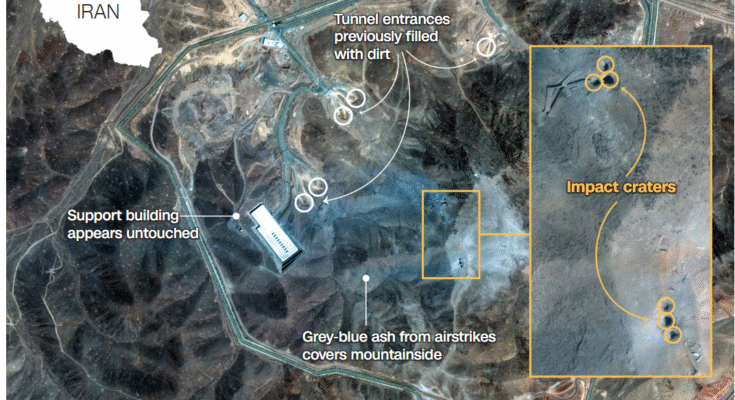Last weekend’s US military strikes on three Iranian nuclear facilities did not destroy the core components of Iran’s nuclear program and likely only delayed it by a few months, according to an early intelligence assessment by the Defense Intelligence Agency (DIA), sources briefed on the matter told CNN.
The assessment, based on a battle damage evaluation conducted by US Central Command, is preliminary and remains under review as new intelligence continues to arrive. It contrasts sharply with President Donald Trump’s repeated assertions that the strikes “completely and totally obliterated” Iran’s nuclear enrichment sites. Secretary of Defense Pete Hegseth also claimed Iran’s nuclear ambitions had been “obliterated.”
Two sources familiar with the DIA analysis said Iran’s enriched uranium stockpile survived the strikes, with centrifuges largely intact or moved out ahead of the attacks. The assessment estimates the strikes set back Iran’s program by “maybe a few months, tops.”
The White House acknowledged the existence of the assessment but strongly disputed its conclusions. Press Secretary Karoline Leavitt condemned the leak of the “top secret” report as an attempt to discredit President Trump and praised the military mission’s success.
Trump, attending the NATO summit in the Netherlands, rejected the report on Truth Social, calling the strikes “one of the most successful military strikes in history” and declaring the nuclear sites “completely destroyed.”
Hegseth, also at NATO, described the report as “preliminary” and “low confidence,” suggested political motives behind the leak, and said an FBI investigation is underway to identify the source.
The US military maintains the operation was an “overwhelming success,” but the full impact remains unclear. Sources did not indicate how the DIA’s assessment aligns with views from other intelligence agencies. The US continues gathering intelligence, including from inside Iran, to evaluate the damage fully.
Iran has a well-developed nuclear program
Since the 1960s, Iran has been building its nuclear infrastructure, frequently operating in secrecy with some facilities located underground. The country possesses the capability to carry out nearly all stages of uranium production—from mining to enrichment—while maintaining that its nuclear program is intended solely for peaceful purposes.

In the days leading up to the US military strikes, Israel had already been targeting Iranian nuclear facilities but claimed it needed the US’s 30,000-pound bunker buster bombs to complete the mission. While US B-2 bombers dropped over a dozen of these bombs on two key sites—the Fordow Fuel Enrichment Plant and the Natanz Enrichment Complex—the bombs did not fully destroy the sites’ centrifuges or highly enriched uranium, according to sources familiar with the intelligence assessment.
The damage across all three sites—Fordow, Natanz, and Isfahan—was largely confined to aboveground structures, which were severely damaged. This included the power infrastructure and some facilities used to process uranium into metal for bomb-making.
Israel’s own assessment found less damage at Fordow than expected. However, Israeli officials believe that the combined US and Israeli military actions on multiple nuclear sites have set back Iran’s nuclear program by about two years—assuming Iran can rebuild without interference, which Israel is committed to preventing. Notably, Israel had previously stated publicly that Iran’s program had already been delayed by two years before the US strikes.
Secretary of Defense Pete Hegseth told CNN, “Based on everything we have seen—and I’ve seen it all—our bombing campaign obliterated Iran’s ability to create nuclear weapons. Our massive bombs hit exactly the right spot at each target and worked perfectly. The impact of those bombs is buried under a mountain of rubble in Iran; so anyone who says the bombs were not devastating is just trying to undermine the President and the successful mission.”
On Tuesday morning, President Trump reiterated his belief that the strikes caused significant damage. “I think it’s been completely demolished,” he said. “Those pilots hit their targets. Those targets were obliterated, and the pilots should be given credit.”
When asked about the possibility of Iran rebuilding its nuclear program, Trump responded, “That place is under rock. That place is demolished.”
On Wednesday, Trump criticized the media, including CNN, but maintained that the strikes had set Iran’s nuclear ambitions back by decades. He did acknowledge the intelligence was “inconclusive” and preliminary and suggested that Israel would soon provide a clearer picture based on its own findings.
“The intelligence was very inconclusive,” Trump said at the NATO summit in The Hague. “The intelligence says we don’t know. It could have been very severe.”
While President Trump and Secretary of Defense Pete Hegseth have been confident about the success of the strikes, Chairman of the Joint Chiefs of Staff General Dan Caine cautioned on Sunday that the damage assessment is still ongoing and it would be “way too early” to confirm whether Iran retains any nuclear capabilities.
Republican Representative Michael McCaul, chairman emeritus of the House Foreign Affairs Committee, did not support Trump’s claims that Iran’s nuclear program had been “obliterated” when speaking with CNN on Tuesday.
“I’ve been briefed on this plan in the past, and it was never meant to completely destroy the nuclear facilities, but rather cause significant damage,” McCaul said, referring to the US military’s strike plans on Iranian nuclear sites. “But it was always known to be a temporary setback.”
Jeffrey Lewis, a weapons expert and professor at the Middlebury Institute of International Studies who has analyzed commercial satellite imagery of the strike sites, concurred that the attacks do not appear to have ended Iran’s nuclear program.
“The ceasefire came without either Israel or the United States being able to destroy several key underground nuclear facilities, including near Natanz, Isfahan, and Parchin,” Lewis noted, referencing the ceasefire between Israel and Iran announced by Trump on Monday. Parchin is another nuclear complex located near Tehran.
“These facilities could serve as the basis for the rapid reconstitution of Iran’s nuclear program.”
Earlier Tuesday, classified briefings for both the House and Senate on the operation were canceled. The all-Senate briefing has been rescheduled for Thursday, according to two sources familiar with the matter. The briefing for all House members has also been postponed, though the reasons and new date have not been disclosed.
Democratic Representative Pat Ryan of New York criticized the cancellation on X, stating, “Trump just cancelled a classified House briefing on the Iran strikes with zero explanation. The real reason? He claims he destroyed ‘all nuclear facilities and capability;’ his team knows they can’t back up his bluster and BS.”
Iran’s Fordow Fuel Enrichment Plant
A satellite image from Maxar Technologies, captured on June 22, reveals visible external damage to the Fordow nuclear plant following US strikes. The image shows at least six impact craters along a ridge above the underground facility, indicating the use of bunker-busting bombs.

As CNN has reported, there have long been doubts about whether the US’s bunker-buster bombs, known as Massive Ordnance Penetrators, could fully destroy Iran’s heavily fortified nuclear sites buried deep underground—especially at Fordow and Isfahan, Iran’s largest nuclear research complex.
Notably, the US targeted Isfahan with Tomahawk missiles launched from a submarine instead of bunker-buster bombs. Sources explained this was because it was believed the bombs likely wouldn’t penetrate Isfahan’s deeper levels, which are even more deeply buried than those at Fordow.
US officials also believe Iran maintains secret nuclear facilities that were not hit in the strikes and remain operational, according to two sources familiar with the situation.
This story has been updated with additional details.
CNN reporters Kaitlan Collins, Jim Sciutto, Kevin Liptak, Lauren Fox, Annie Grayer, and DJ Judd contributed to this report.



